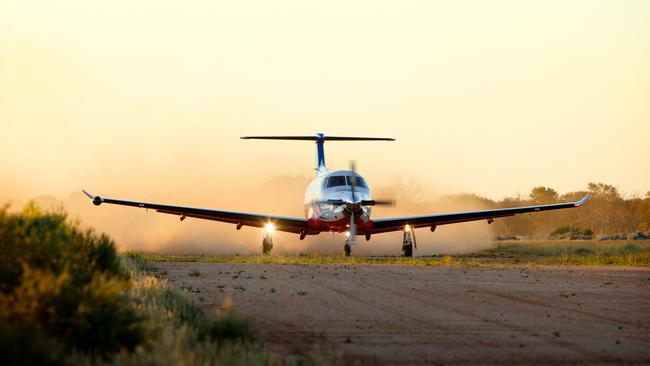Flying Doctors ramp up pilot program
Aeromedical recruits from the same three sectors of aviation as the big commercial airlines.

Consider the reality of being seriously injured or ill in an isolated part of the Australian outback. Right now, it’s possible for the Royal Flying Doctor Service to be with you within two hours, regardless of where you are.
Without pilots, we cannot.
Up until now, most media focus on the global pilot shortage has been on larger, commercial airlines, and rightly so. The figures are alarming from a business and global travel standpoint — 290,000 active pilots service the aviation needs of the global population, and Boeing alarmingly predicts the need for a further 261,000 in the Asia-Pacific during the next 20 years to meet demand from emerging markets primarily in India and China.
It is also these same markets from which most Australian pilots are headhunted for commercial pilot roles.
The stark truth is, as a charity, we cannot compete with some of the salaries on offer.
That isn’t to say we cannot offer our pilots decent salaries and truly rewarding and exciting careers in aviation, but combining slightly reduced wages with the prospect of living remotely has always presented obstacles to recruitment, whether a shortage of suitable candidates exists or not.
The fact is, aeromedical and general aviation are not quarantined from the pilot shortage.
We recruit from the same three sectors of aviation as the big commercial airlines: regional airlines, general aviation and defence.
And so long as these three areas suffer, so do we — unless we shift the way in which we operate our pilot recruitment and retention.
I hold a firm belief that everyone involved in the aviation industry has an obligation to give back. Everyone must play their part by harbouring and encouraging young and upcoming pilots.
During the past six months, the RFDS in Queensland has actively positioned workforce sustainability at the forefront of our operations. In doing so, we have looked for the pilots who already have an affinity with the bush, who share our passion and purpose, and recruited these people into a newly developing RFDS Aircrew Mentoring Program, or RAMP.
RAMP takes young, experienced general aviation pilots from rural Queensland who may just fall short of the required flying hours to be an RFDS pilot and equips them with a 12 to 18-month sponsored induction and mentorship. In return, we expect a three to five-year period of service as an RFDS pilot once they meet the required standard and are checked to line.
Training pilots is not cheap, and RAMP is not a large-scale program in which we take on great numbers of pilots and train them en masse.
That is not feasible or sustainable for a not-for-profit organisation such as ours. We are limited to about two RAMP pilots each year whose training and mentorship is philanthropically funded.
Realistically, the RFDS is only a small player in the global aviation market.
But our impact on individuals and communities in Australia is undeniably huge.
And while we don’t have the resources to develop national pilot training academies, we can play our part by introducing incremental innovations to our training and recruitment efforts, to ensure we are future-proofing our business and continuing to provide a world-class aeromedical service.
Meredith Staib is chief executive of the Royal Flying Doctor Service (Queensland).



If you think the only inconvenience of the global pilot shortage will be a possible delay or cancellation of your next international or domestic flight, you’re wrong.